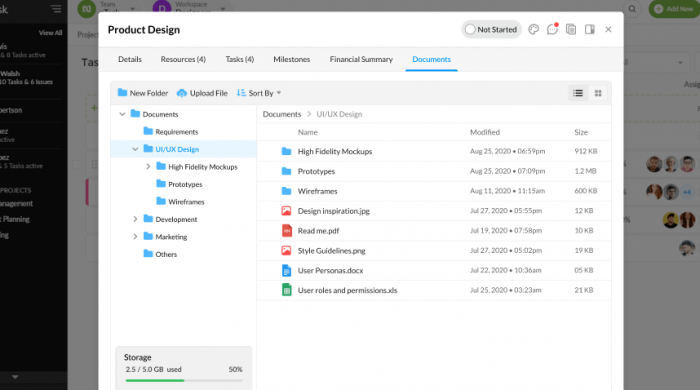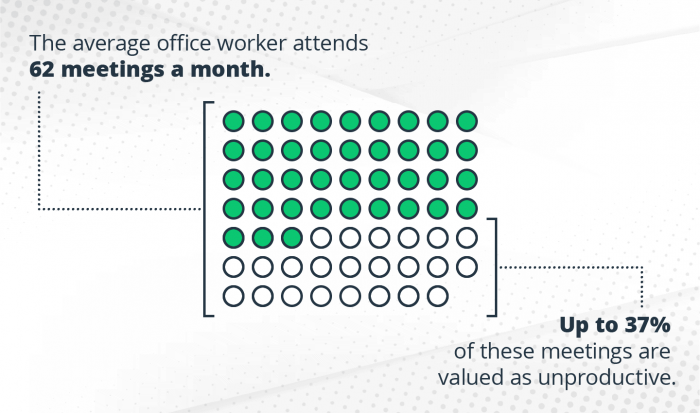Ah, the age-old question for businesses: how do I improve my company’s productivity? It’s hardly surprising that one of the big answers is reducing employee unproductivity. How to do that is a whole different question, especially when each employee will have different causes and face a variety of challenges that make them less productive.
Unproductivity costs businesses in the US $483 to $605 billion every year due to disengaged employees. That’s a lot! It’s not something you can sweep under the carpet and keep ignoring if you want your business to thrive. It’s literally costing you.
With a price tag like that, increasing productivity can seem like a massive undertaking. However, everyone faces it at some point, regardless of whether you’re running a multi-national company or a self-employed writer outlining your book series.

You’re certainly not the only one to struggle with it. That’s why we’re here to help you tackle employee unproductivity head-on, by highlighting some of the main causes of it and offering sure-fire ways to eradicate it from your business.
Cause 1: Burnout
One of the most common causes of employee unproductivity is burnout. This can have a number of causes, from high levels of stress to managing tricky mental or physical health conditions, bad work environments, and lack of recognition within companies. No one works at their best when they feel burnt out, so it’s no wonder it takes such a toll on productivity.
Three in five workers say they’re burnt out in their current job, making burnout a priority issue for any company. Recognizing what it looks like in your employees is the first step in being able to prevent it. Burnout can easily settle into your business, robbing you of productivity, and getting rid of it takes consistent work overtime.

Solutions to Employee Burnout
However insurmountable burnout can seem, there are some easy ways to banish it from your business. Of course, it affects each person differently, but certain tricks will help the majority of cases. Try the following:
Prioritize balance
An easy way to manage burnout and demonstrate your business’s CSR efforts is to ensure employees have a good work-life balance. No one can be productive constantly, and your staff requires downtime when they’re removed from the work mindset.
You can encourage employee wellbeing by setting strict limits on work communication outside of work hours, making sure members of your team take regular breaks throughout the day, and ensuring they have the opportunity for proper meals.
Praise your employees
Celebrate publicly when your employees achieve things both in and out of the workplace, paying attention to what they do and the value of their role in your team. Make it a part of your everyday culture to encourage and reward your staff.
This means doing more than offering annual bonuses. Whether completing a fun run or finding the perfect hosted contact center solutions for your business, tell employees when they’ve done well and fostered an atmosphere of constantly cheering each other on.
Be flexible

Everyone goes through rough patches, and a bit of extra understanding on your part will go a long way toward helping with this. Be open to discussing flexible working hours, working environments, and mental health days.
An employee who knows their company will support them in working from home to manage a family situation is more likely to show loyalty to your business and put in extra work when it’s needed.
Related Resources:
Cause 2: Lack of Resources
It’s easy to overlook employees’ lack of proper equipment or resources as a reason for unproductivity. This can be from not knowing where to find information, not having skills that would help, or not being in the best environment.
Resolving this is one of the most straightforward ways to boost productivity, but it means making sure all employees have what they need to fulfill their roles.
A common assumption is that employees have the skills they need to perform their job, but this overlooks how roles change over time. Simply by staying in the same job for a decade or more, an employee may find themselves without proper training in procedures they’re expected to complete. Even in the last two years, things like secure video conferencing have come on leaps and bounds.
Solutions for handling resources
You can use the following tips to check your team is sufficiently resourced:
Supply the right equipment
Check-in with your employees and take note of things that would help them in their job. Start by checking the resources they’re using, from chairs to laptops, task management software, and even location.
Make sure these resources aren’t causing stress or strain and are suited to being productive. Simple things like ergonomic wrist rests can reduce cramps and discomfort, making the workplace work for employees and reducing the incidence of injury (however minor).
Update training
You should also schedule regular training for employees, however long they’ve been with your company. This can be case studies showing how to use new pieces of software, call center recordings to practice following certain procedures, or online courses to teach soft skills like organization or time management.
This training will not only help to develop your employees professionally and make them more specialized in their field but prevents them from wasting time using equipment inefficiently or using others’ time asking how to do things.
Make documents easily available

Having an easily accessible filing and sharing system, so documentation and guidance can be acquired by anyone who needs it, can make a huge difference to your productivity too. If everyone can check the protocol for managing complaints, the job becomes something any of your employees can complete. This helps staff share the workload and reduces emails pinging the same documents to various people on repeat.
Cause 3: Business Structure and Management
Sometimes, no matter how much employees want to be productive, the way a business is set up limits the amount they can do. Think of structures where one manager has to approve everything before it gets set into motion. Even if the rest of the team has a productive day, the amount that gets completed is capped at how much the manager can approve.

There may be other structural limits to your team’s productivity: slow response times with communications, poor meeting management leading to too many meetings with people who don’t need to be there, multitasking rather than fully dedicating time to one task… Each of these draws employee attention away from the things they should be focusing on.
Solutions to manage the business structure
Where vast amounts of employees are unproductive, the problem likely rests with the systems in place. This doesn’t mean you have to draw up a whole new business plan though. Instead, try the following:
Communicate clearly
Set out expectations of how you want your teams to communicate and on what platform. For example, use emails for chunkier discussions and an instant messaging system for shorter, quicker queries.
Install programs that everyone can connect to and that have the features you want. Look into Zoom integrations for convenience rather than compatibility.
Similarly, identify and explicitly communicate who needs to be there, how long meetings should last, and what they’re about.
Avoid bottlenecks
This could be a perfectionist manager who wants to check everything or only one developer having access to part of your website. Whoever it is, do they need to be the only person to perform that role? Could other employees be trusted to do final checks?
In situations where things do have to go through one person, is there a way to delegate other parts of their workload or use RPA so they can prioritize more urgent and important matters? The above will same time and increase productivity.
Trust your employees
Where management is overbearing, this acts as a double-edged sword, slowing down work and demotivating those they manage. This micromanaging and constant critique makes it harder for those below and discourages them from going above and beyond.
If there’s a danger of demotivating your team and creating a negative workplace environment, you need to address this ASAP. This may mean replacing some of the higher-up members of your organization or, at the very least, having a word regarding how their actions are impacting employees.
Be sure to listen to feedback from those at the bottom of the ladder as much as those at the top.
Productivity Awaits
Often, unproductivity stems from a combination of factors and isn’t as simple as changing a single thing. Each of the issues we’ve emphasized can have a domino effect, triggering more unproductivity if it isn’t dealt with. Don’t let this put you off, because it works both ways, and the positive changes you make might have a larger impact than you think.
Hopefully, these solutions will offer you an idea of how you can go about managing unproductivity in your company. What works for you will depend a lot on your employees, so it’s worth starting some conversations and asking them what would help them be more productive.
A collaborative effort is always going to be more successful in finding solutions for your unproductivity, so make sure your employees are on board. After all, productive employees make for a successful and profitable business.

Post By: Jenna Bunnell
Senior Manager-Content Marketing at Dialpad
Jenna Bunnell is driven and passionate about communicating a brand’s design sensibility and visualizing how content can be presented in creative and comprehensive ways. Connect with her on LinkedIn.

